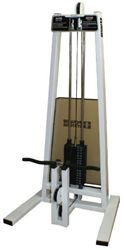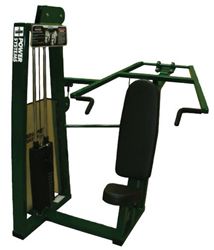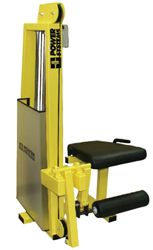Fitness Equipment For Kids
Strength Training for Kidsby Elizabeth Quinn, M.S. Major health organizations such as the American College of Sports Medicine (ACSM) , the American Academy of Pediatrics (AAP) and the National Strength and Conditioning Association(NSCA) support children's participation in appropriately designed and competently supervised strength training programs. Benefits include increasing the muscular strength of kids and improvements in a child's muscular endurance, body composition and sports performance. When designing strength training programs for children it is important to remember that children are anatomically, physiologically, and psychologically immature. Adult strength training guidelines and training philosophies should not be used for kids. Although all participants should understand the risks and benefits of strength training, a young child should not be expected to comprehend the intricacies of muscle action. Focus on lifetime fitness and teach kids how to exercise properly. Above all, provide a stimulating program that develops in children amore positive attitude towards strength training and a healthy lifestyle. Generally speaking, if 7 and 8 year old children are ready for participation in organized sports or activities (e.g. little league baseball or gymnastics), then they are ready for some type of strength training. Strength Training Guidelines for Kids:
Elizabeth Quinn, M.S., is an exercise physiologist and health information writer and researcher. She currently manages the clinical health information development for a NW health care organization. A former national silver medalist in road and track cycling, Elizabeth continues to participate in recreational cycling, mountain biking, running, skiing and almost anything else that requires movement. To read more of her articles, please visit sportsmedicine.about.com |
|||
 |
Fitness Equipment: agility training equipment | ankle and wrist weights | balance boards | fitness books and videos | core training equipment | exercise balls | exercise charts and posters | exercise bikes | fitness recovery | fitness accessories | fitness equipment for kids | flexibility and stretching | strength training equipment | jump ropes | mats | medicine balls | personal training | physical therapy equipment | plyometrics | resistance bands | running training aids | Proform treadmills | water aerobics accessories | aquasana water filters | weighted bars | yoga and pilates accessories | exercise equipment | gift ideas
Sports & Athletic Equipment: archery bows and arrows | Athletic Training Aids | badminton supplies | balls & accessories | baseball equipment | basketball equipment | kickboxing bags | coaching equipment | sports cones | field hockey goals | football equipment | gymnastics equipment | floor hockey equipment | lacrosse equipment | track and field equipment | soccer equipment | athletic storage | tennis training aids | volleyball equipment
Outdoor Toys and Active Kids' Games: camp games and activities | bean bag games | bean bags | bocce sets | bowling | croquet sets | flag football supplies | giant cage balls | hula hoops | hoppers | inflatable TOYs | fooseball | paddleball | play parachutes | playground swings | pogo sticks | roll-out play rugs | scooter boards | shuffleboard sets | stick games | stilts | ping pong paddles | tetherball games | toss games | tug of war ropes













